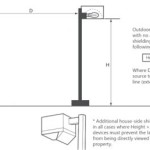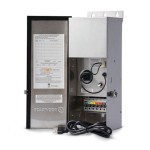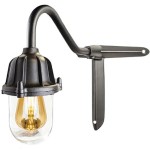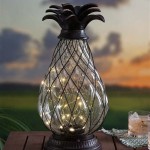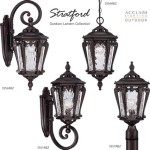How to Get Electricity For Your Outdoor Wedding
An outdoor wedding offers a beautiful and unique setting for celebrating a marriage. However, planning an outdoor wedding requires careful consideration of logistical challenges, one of the most crucial being the provision of electricity. Electricity is often essential for lighting, sound systems, catering equipment, and potentially climate control, making it a foundational element for a successful event. Successfully supplying electricity to an outdoor wedding venue necessitates careful planning, an understanding of power requirements, and consideration of various power source options.
Determining Power Needs
The first step in securing electricity for an outdoor wedding is to comprehensively assess the event's power requirements. This involves creating a detailed inventory of all electrical appliances and equipment that will be used. Each device should be carefully evaluated to determine its power consumption, typically measured in watts (W) or kilowatts (kW). Neglecting this step can lead to insufficient power supply, resulting in equipment malfunctions, power outages, and disruption to the wedding activities.
Start by compiling a list that includes the following categories of equipment:
*Lighting:
This includes string lights, spotlights, stage lighting, and any decorative lighting. Note the wattage of each bulb or lighting fixture and the total number of each type being used. *Sound Equipment:
Microphones, speakers, amplifiers, DJ equipment, and musical instruments that require electricity. Check the power requirements for each piece of equipment. *Catering Equipment:
Ovens, warming trays, refrigerators, coffee makers, blenders, and any other appliances used for food and beverage preparation and service. This category often requires a significant amount of power. *Climate Control:
Fans for cooling, heaters for warming, or air conditioning units, depending on the season and location. These are often high-power consumption items. *Decorations:
Electric-powered decorations, such as illuminated signs or water features. *Other Equipment:
Any other electrical devices such as projectors, photo booths, or charging stations for guests' devices.Once the list is compiled, determine the wattage needed for each item. This information is usually found on a label on the appliance or in the user manual. If the appliance indicates amperage (A) and voltage (V), wattage can be calculated using the formula: Watts (W) = Amps (A) x Volts (V). The standard voltage in the United States is 120V, while in many other countries it is 220V or 240V. Add up the wattage of all the equipment to determine the total power requirement for the wedding. It is advisable to add a safety margin of approximately 20% to this total to account for potential surges and the simultaneous operation of all equipment.
Beyond wattage, it's essential to consider the type of electrical outlets required. Standard household outlets are usually sufficient for low-power devices, but higher-power appliances might require specialized outlets, such as 220V outlets or outlets with higher amperage ratings. Ensure that the power source being considered offers the necessary types and number of outlets.
Finally, think about the duration of the event. Power generators are typically rated for their continuous runtime, and it’s crucial to select a generator that can provide power for the entire duration of the wedding, plus a buffer period for setup and breakdown. Similarly, if relying on an existing power source, confirm that it can sustain the load for the length of the event without tripping breakers or experiencing voltage drops.
Exploring Power Source Options
After assessing the power requirements, the next step is to explore the available power source options. The choice of power source will depend on factors such as the location of the venue, the availability of existing power infrastructure, the budget, and the environmental considerations. Common options include:
*Existing On-Site Power:
If the wedding venue has existing electrical outlets, this is often the simplest and most cost-effective solution. However, it is essential to verify that the existing infrastructure can handle the total power load. This may involve consulting with an electrician to assess the capacity of the electrical panel and the condition of the wiring. It is also crucial to identify the location of all outlets and ensure they are conveniently located for the planned setup. If the existing outlets are not sufficient, additional circuits may need to be installed, which can incur additional costs. Verify the voltage and amperage provided by these outlets to ensure compatibility with all planned equipment. *Portable Generators:
Portable generators are a common solution for outdoor events where existing power is unavailable or insufficient. Generators can be rented or purchased, and come in a variety of sizes and power outputs. Selecting the right generator requires matching its power capacity to the event's power requirements, with an added safety margin. There are three main types of portable generators: conventional generators, inverter generators, and dual-fuel generators. *Conventional generators
are generally less expensive and suitable for powering basic electrical equipment. However, they tend to be louder and produce less clean power. *Inverter generators
are quieter, more fuel-efficient, and produce cleaner power, making them ideal for sensitive electronic equipment such as sound systems and computers. *Dual-fuel generators
can run on gasoline or propane, offering flexibility and potentially lower fuel costs, depending on the availability and price of each fuel.When using a generator, safety is paramount. Generators should be placed in a well-ventilated area, away from flammable materials and guests, to prevent carbon monoxide poisoning. Extension cords should be heavy-duty and properly grounded to prevent electrical hazards. Noise can be a concern with generators, so consider renting a sound-dampening enclosure or positioning the generator as far away from the event area as possible. Also, be aware of any noise restrictions imposed by the local authorities.
*Solar Power:
Solar power is an environmentally friendly option for providing electricity to an outdoor wedding. Solar generators, which consist of solar panels and a battery storage system, can be used to generate electricity from sunlight. The amount of power that can be generated depends on the size and efficiency of the solar panels and the amount of sunlight available. Solar power is best suited for events with lower power requirements, such as lighting and sound systems. It may not be sufficient for high-power appliances like catering equipment or air conditioners. Solar power is a quieter and cleaner alternative to generators, but it is also generally more expensive. *Battery Power Stations:
Portable power stations are large battery packs that can be charged prior to the event and used to power electrical devices. They are a quiet and emission-free option, suitable for powering lighting, sound systems, and small appliances. Power stations come in various sizes and capacities, so it is important to choose one that can provide sufficient power for the duration of the event. Battery life can be a limitation, so it is crucial to carefully calculate the power consumption of all devices and ensure the power station has enough capacity. Some power stations can be recharged using solar panels, providing a sustainable power solution. *Hybrid Solutions:
Combining different power sources can provide a reliable and flexible power solution. For example, a generator can be used to power high-demand equipment, while solar power or battery power stations can be used for lighting and sound. This approach can reduce reliance on generators and minimize noise and emissions. Hybrid solutions require careful planning and coordination to ensure the different power sources are compatible and can work together effectively.Safety and Logistics
Regardless of the power source chosen, safety should be a top priority. Implementing proper safety measures can prevent accidents, injuries, and equipment damage. Several key logistical considerations are crucial for ensuring a safe and successful event.
First, if using extension cords, select heavy-duty, outdoor-rated cords that are suitable for the power requirements of the equipment being used. Avoid overloading extension cords, as this can cause overheating and electrical hazards. Ensure all extension cords are properly grounded and free from damage. Secure the cords to prevent tripping hazards and protect them from being damaged by foot traffic or vehicles. Use cable ramps or covers to protect cords in high-traffic areas.
Second, ground fault circuit interrupters (GFCIs) should be used in all wet or damp locations, such as near water features or in areas where food and beverages are being served. GFCIs can detect ground faults and quickly shut off power, preventing electrical shocks. Portable GFCIs can be plugged into existing outlets or generators to provide additional protection.
Third, have a qualified electrician inspect the power setup before the event to ensure it is safe and compliant with local regulations. An electrician can identify potential hazards, make necessary repairs, and provide guidance on best practices for electrical safety. This is particularly important if modifications are made to the existing electrical infrastructure or if high-power equipment is being used.
Fourth, develop a clear emergency plan in case of power outages or electrical emergencies. This plan should include designated personnel responsible for troubleshooting electrical problems, backup power sources, and procedures for safely shutting down equipment. Ensure that all staff and vendors are familiar with the emergency plan and know how to respond in the event of an emergency.
Fifth, obtain all necessary permits and licenses for using generators or other power equipment. Local authorities may have specific requirements for noise levels, emissions, and safety. Ensure that the event complies with all applicable regulations to avoid fines or legal issues.
Sixth, secure the power source to prevent unauthorized access. Generators and power stations should be placed in a secure location where they cannot be tampered with or stolen. Consider using fences, barriers, or security personnel to protect the power equipment.
In summary, securing electricity for an outdoor wedding requires a thorough understanding of the power needs, careful consideration of the available power source options, and meticulous planning for safety and logistics. By following these guidelines, it is possible to create a safe and reliable power supply that will help ensure a memorable and enjoyable wedding celebration.

Outdoor Wedding Lighting Ideas How To Light An

How To Run Electricity A Wedding Tent Liri Structure

11 Breathtaking Outdoor Wedding Lights Ideas

Outdoor Wedding Reception Lighting Tips Wetables Comwetables Com

How To Set Eye Catching Wedding Decorations Lighting

6 Charming Ways To Light Up Your Outdoor Wedding

Wedding Advice Eco Friendly Heating Options For Outdoor Ceremonies

Wedding Lighting Ideas Indoors Outdoors For Venues Yurts Tipis

Wedding Floor Ideas The Secret To An Epic Reception

Small Wedding Advice Tips And Tricks Topweddingsites Com Receptions Backyard Party
Related Posts
